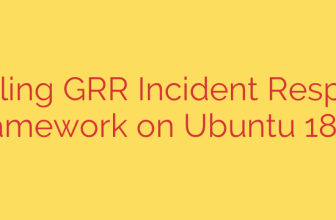
Beyond the Gateway: Why AI is the Future of Email Security
Email remains the number one attack vector for cybercriminals, serving as the primary entry point for everything from ransomware to devastating data breaches. For years, organizations have relied on Secure Email Gateways (SEGs) as their first line of defense. However, the threat landscape has evolved dramatically, and these traditional gateways are increasingly struggling to keep up with the sophistication of modern attacks.
Today’s most dangerous threats aren’t just blunt-force attacks with obvious malware attachments. They are subtle, socially engineered campaigns like Business Email Compromise (BEC), spear phishing, and account takeovers. These attacks often contain no malicious payload, instead relying on psychological manipulation to trick employees into making fraudulent wire transfers, revealing credentials, or compromising sensitive data. This is where traditional, signature-based security often fails.
A new approach is needed—one that goes beyond the gateway and intelligently analyzes the context and behavior behind every email.
The Limitations of Traditional Email Security
Secure Email Gateways are designed to scan incoming emails for known threats before they ever reach a user’s inbox. They check for malicious attachments, spam signatures, and links to known phishing sites. While essential, this approach has significant blind spots in the face of modern tactics:
- Social Engineering: A well-crafted email from a spoofed executive address asking for an urgent payment contains no malware. A traditional SEG has no reason to flag it as malicious.
- Account Takeover: If a threat actor gains control of a legitimate employee account, any emails they send will originate from a trusted source, bypassing gateway filters entirely.
- Zero-Day Threats: Novel malware and phishing campaigns that haven’t been identified yet can easily slip past signature-based detection.
- Internal Threats: SEGs primarily focus on external threats, offering little protection against malicious or compromised insiders sending harmful emails within the organization.
These gaps expose organizations to significant financial and reputational risk. The solution lies in adding a layer of intelligence that can understand context, intent, and behavior.
The Power of AI in Post-Delivery Threat Detection
To counter these advanced threats, forward-thinking organizations are adopting AI-powered email security solutions that integrate directly with cloud email platforms like Microsoft 365 and Google Workspace. Instead of just sitting at the perimeter, these tools analyze emails after they have been delivered, providing a crucial layer of post-delivery protection.
The core of this technology is behavioral analysis. AI-driven systems establish a baseline of normal behavior for every user in the organization. They learn who typically emails whom, the language and tone they use, the times they are active, and the types of requests they make.
When an email deviates from this established norm, the AI can flag it as a potential threat, even without a malicious link or attachment.
Here’s how this advanced approach revolutionizes email defense:
- Detecting Sophisticated Phishing and BEC: An AI system can recognize when an email supposedly from the CEO uses unusual phrasing or makes an out-of-character request, such as asking for a wire transfer to a new vendor. It understands that while the email passed technical checks, its content and context are highly suspicious.
- Identifying Compromised Internal Accounts: If an employee’s account suddenly starts sending unusual emails to colleagues or attempting to exfiltrate data, the AI will immediately spot this deviation from normal behavior. This allows security teams to lock down the compromised account before significant damage is done.
- Uncovering Novel Threats: By focusing on anomalous behavior rather than known signatures, AI can effectively identify zero-day attacks and novel social engineering tactics that would otherwise go unnoticed.
- Automated and Precise Remediation: Once a threat is identified, these intelligent systems can automatically quarantine the malicious emails from all user inboxes where they were delivered. This rapid, automated response is critical for containing an attack before it spreads.
Actionable Steps to Bolster Your Email Defenses
Relying solely on your cloud email provider’s built-in security or a traditional SEG is no longer sufficient. To build a resilient cybersecurity posture, consider the following actions:
- Adopt a Layered Security Model: Do not replace your SEG. Instead, augment it with an AI-powered, API-based email security solution. This creates a defense-in-depth strategy that combines perimeter protection with intelligent post-delivery analysis.
- Focus on Behavioral Analysis: When evaluating security tools, prioritize those that use AI and machine learning to build behavioral baselines. The ability to detect anomalies is key to stopping modern, payload-free attacks.
- Implement Continuous Security Training: Technology is only part of the solution. Your employees are your last line of defense. Regular, engaging security awareness training helps them spot and report suspicious emails that technology might miss.
- Enforce Multi-Factor Authentication (MFA): The single most effective step to prevent account takeovers is enforcing MFA across your organization. This ensures that even if a user’s credentials are stolen, their account remains secure.
As cybercriminals continue to refine their methods, our defenses must evolve as well. By moving beyond the gateway and embracing the intelligence of AI, organizations can gain the visibility and context needed to detect and neutralize the most advanced email threats, protecting their data, finances, and reputation.
Source: https://www.bleepingcomputer.com/news/security/meet-varonis-interceptor-ai-native-email-security/








